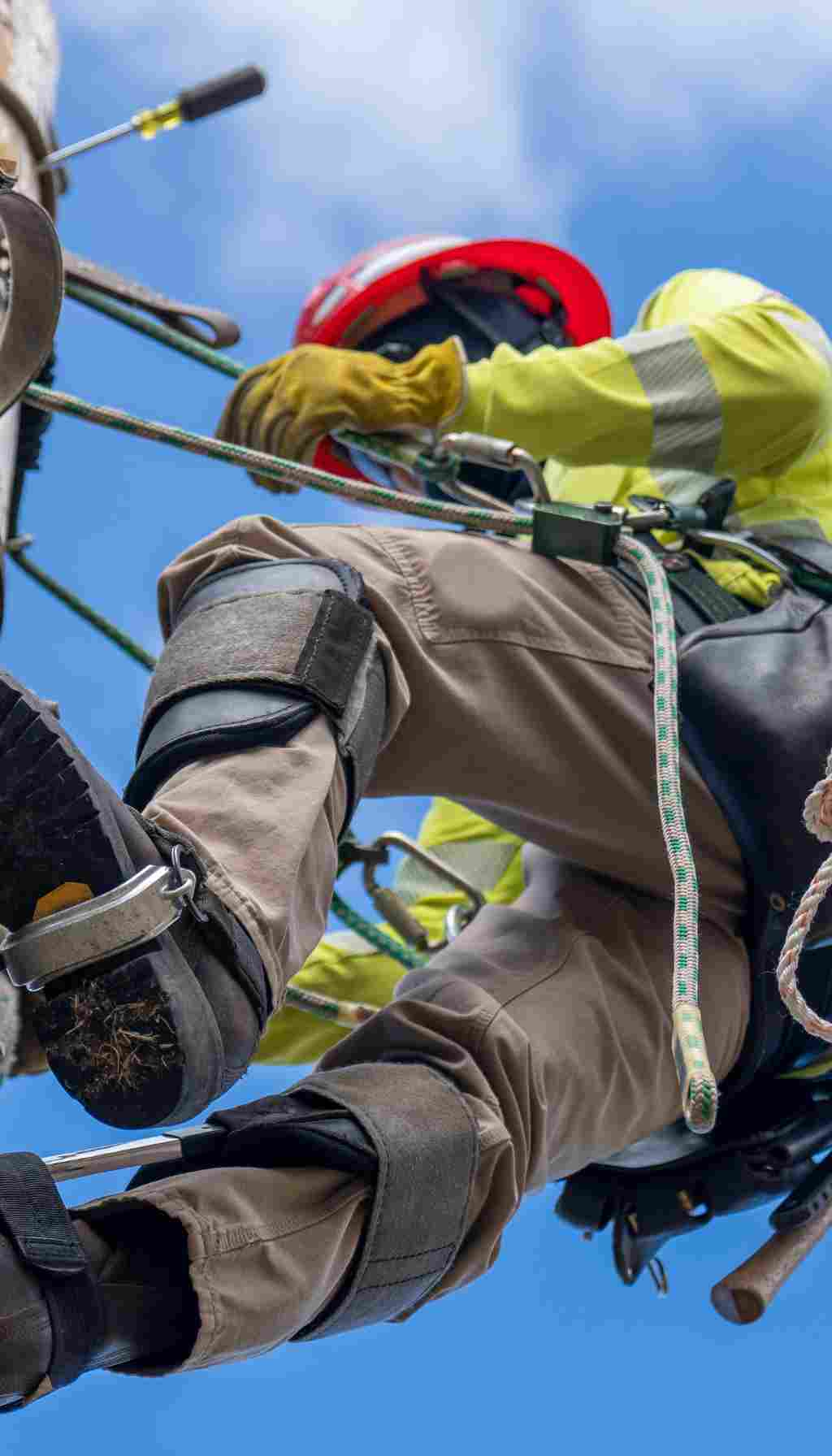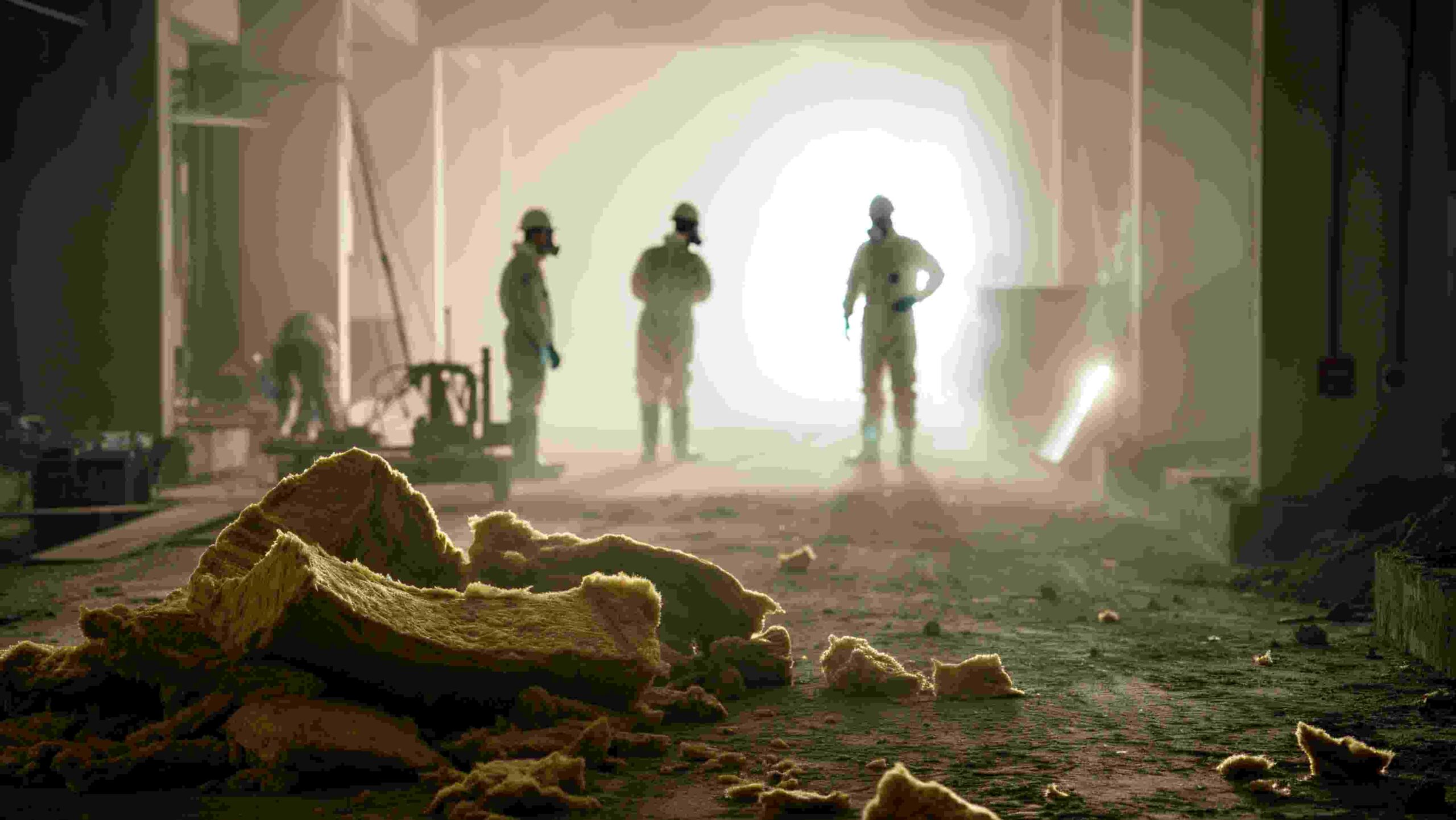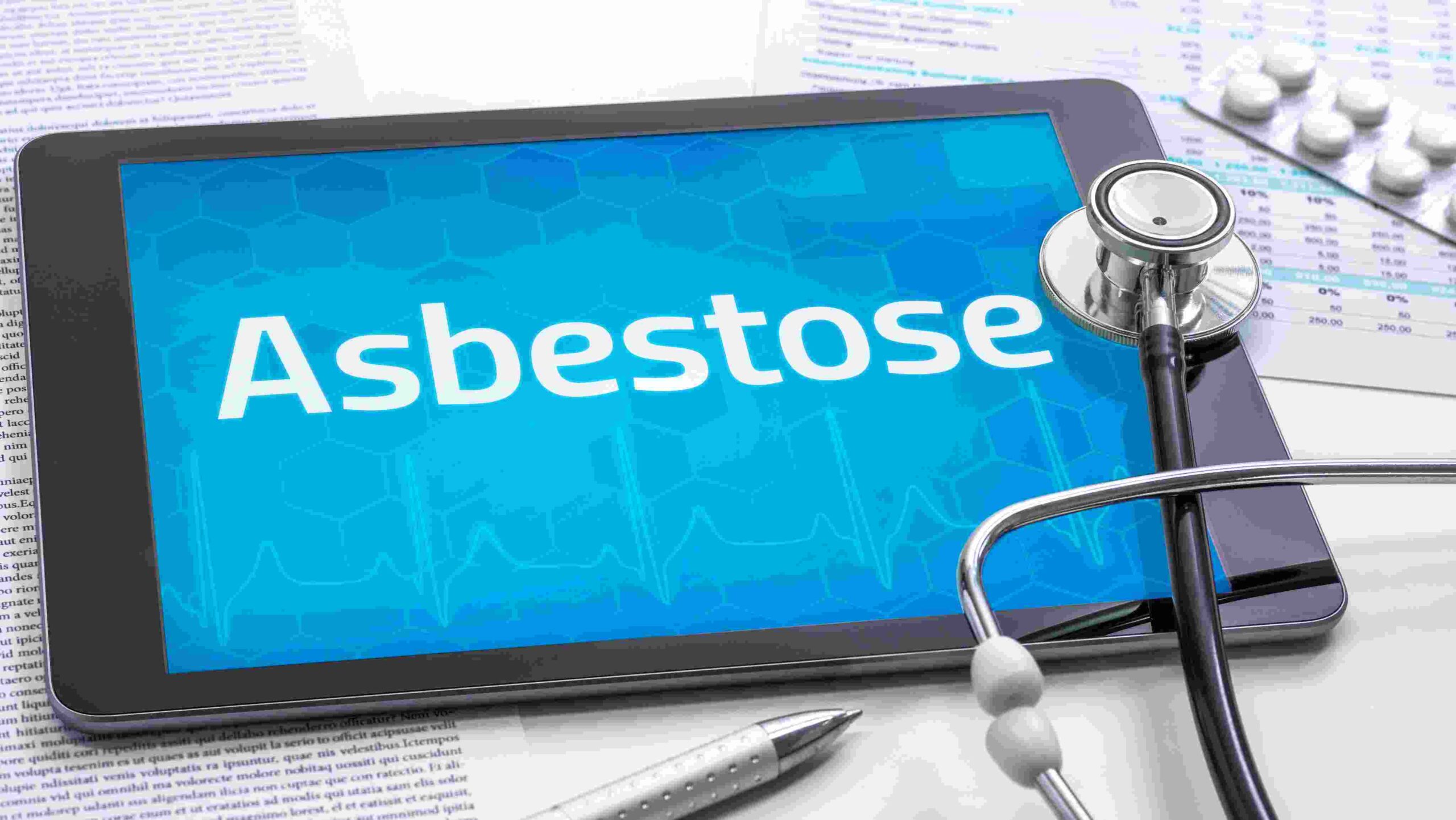Seismic Shift EU Asbestos Law Dramatically Tightens for Irish Businesses
Why a 90% Exposure Limit Cut Changes Everything
The Clock is Ticking Ireland’s New Asbestos Law Deadline
A seismic shift is coming to asbestos regulation across the European Union, and Irish businesses in the construction, demolition, and maintenance sectors need to prepare now. EU Directive 2023/2668, adopted on November 22, 2023, mandates a dramatic 90% reduction in workplace asbestos exposure limits from 0.1 fibres per cm³ to just 0.01 fibres per cm³.
With Ireland required to transpose this directive into national law by December 21, 2025, the clock is ticking for businesses to understand and prepare for these fundamental changes. This isn’t merely a regulatory adjustment it’s a complete transformation of how asbestos exposure is managed, measured, and controlled in Irish workplaces.
The Deadline Reality: Ireland has until December 21, 2025, to transpose EU Directive 2023/2668 into national law. This directive reduces asbestos exposure limits by 90%, introduces mandatory asbestos surveys before any demolition or refurbishment work, and requires permits for all asbestos removal activities.
The Scale of the Problem Why This Change Matters
The urgency behind this directive becomes clear when examining the human cost of asbestos exposure. According to 2019 data referenced in the Irish government’s consultation document, over 70,000 people across the EU died from asbestos-related illnesses in that year alone. These aren’t just statistics they represent preventable tragedies that occurred despite asbestos being banned across the EU since 2005.
The persistence of asbestos-related deaths decades after the EU ban highlights a critical reality: whilst new asbestos use is prohibited, the material remains widespread in buildings and infrastructure constructed before 2005. Every renovation, demolition, or maintenance project in Ireland potentially involves asbestos exposure risk, making this directive’s stricter controls essential for protecting workers’ lives.
Current Irish Regulations The Baseline We’re Moving From
Ireland’s current asbestos regulations are outlined in S.I. No. 386/2006 – Safety, Health and Welfare at Work (Exposure to Asbestos) Regulations 2006. These regulations established a workplace exposure limit of 0.1 fibres per cm³, measured using phase-contrast microscopy the technology standard when the regulations were created nearly two decades ago.
Under current regulations, the Health and Safety Authority (HSA) requires notification at least 14 days before asbestos removal work begins. Employers must conduct risk assessments, implement control measures, and ensure appropriate training and personal protective equipment for workers who might encounter asbestos.
Whilst these regulations provided a foundation for asbestos safety, the new EU directive represents a quantum leap in protection standards, reflecting two decades of scientific advancement in understanding asbestos risks and measurement capabilities.
The Major Changes Coming What the New Directive Requires
The scope of changes introduced by EU Directive 2023/2668 extends far beyond simply lowering exposure limits. The directive fundamentally transforms how asbestos risks are identified, assessed, and managed across all affected industries.
Exposure Limit Revolution From 0.1 to 0.01 Fibres/cm³
The headline change reducing the maximum workplace exposure limit from 0.1 to 0.01 fibres per cm³ represents more than a numerical adjustment. This tenfold reduction acknowledges scientific evidence that no level of asbestos exposure is truly safe, and that current technology enables detection and control of much lower fibre concentrations than previously possible.
For Irish businesses, this means that work practices, control measures, and monitoring procedures that currently meet legal requirements may no longer be sufficient. Activities that generate minimal asbestos fibres under current standards could exceed the new limits, requiring enhanced protective measures and potentially different working methods entirely.
Immediate Impact: The new 0.01 fibres/cm³ limit will make many current work practices non-compliant. Activities that barely register under current measurement methods may exceed the new exposure limits, requiring fundamental changes to how asbestos-related work is planned and executed.
Electron Microscopy The 2029 Technical Revolution
Beginning in 2029, the directive requires asbestos detection and measurement using electron microscopy rather than the current phase-contrast microscopy method. This technological shift isn’t merely procedural electron microscopy is significantly more sensitive and can detect thin asbestos fibres that current methods miss entirely.
This transition period acknowledges that implementing such sophisticated measurement technology requires time for equipment acquisition, technician training, and laboratory capacity development. However, businesses should begin preparing now, as the enhanced detection capabilities will likely reveal asbestos presence in locations previously considered safe.
Mandatory Pre-Work Asbestos Investigations
The directive makes asbestos surveys mandatory before any demolition or refurbishment work begins. This requirement eliminates the current practice where some projects proceed without adequate asbestos investigation, often resulting in expensive work stoppages when asbestos is discovered during construction.
Under the new regulations, no demolition or refurbishment project can commence without documented evidence that asbestos presence has been thoroughly investigated. This represents a significant shift from current practice, where asbestos surveys are often viewed as optional or conducted only when asbestos presence seems likely.
Permit Requirements for Asbestos Removal
All asbestos removal work will require permits under the new directive, introducing a formal approval process that doesn’t currently exist in Irish regulations. This change aims to ensure that only properly qualified contractors undertake asbestos removal and that appropriate controls are in place before work begins.
The permit system will likely require detailed work plans, evidence of contractor competency, confirmation of appropriate control measures, and demonstration of proper waste disposal arrangements before any asbestos removal can proceed.
Who Is Affected Industries and Roles in the Firing Line
The new directive’s impact extends across multiple sectors of the Irish economy, but certain industries face particularly significant challenges in adapting to the stricter requirements.
Construction and Demolition
Construction and demolition companies face the most immediate impact from the new regulations. Every project involving buildings constructed before 2005 will require mandatory asbestos surveys, and any asbestos discovered must be managed according to the new, stricter exposure limits.
The HSA’s existing guidance on managing asbestos-containing materials during demolition and refurbishment provides a foundation, but companies will need to enhance their procedures significantly to meet the new requirements.
Maintenance and Facilities Management
Maintenance workers and facilities management companies face ongoing exposure risks when working in older buildings. The new exposure limits mean that routine maintenance activities drilling, cutting, or disturbing building materials may require enhanced protective measures or specialist contractor involvement.
Building Owners and Property Managers
Property owners bear responsibility for ensuring that asbestos risks are properly identified and managed before any work begins on their buildings. The mandatory survey requirements place new obligations on building owners to invest in professional asbestos assessments before permitting any renovation or maintenance work.
Pre-Work Investigations The New Mandatory Requirement
The directive’s requirement for mandatory asbestos investigations before demolition or refurbishment work represents one of the most significant practical changes for Irish businesses. This requirement transforms asbestos surveys from optional risk management tools to legal prerequisites for any building work.
Under current practice, many minor renovation projects proceed without formal asbestos surveys, relying instead on visual assessments or assumptions about building age and construction methods. The new directive eliminates this approach entirely, requiring documented evidence of asbestos investigation regardless of project size or perceived risk level.
Legal Requirement: After transposition, no demolition or refurbishment work can legally commence in Ireland without a completed asbestos survey. This applies to projects of all sizes, from major demolitions to minor office renovations, fundamentally changing project planning and budgeting requirements.
What Constitutes Adequate Investigation
The directive doesn’t specify exact survey methodologies, but the requirement for “investigation” suggests comprehensive assessment rather than superficial inspection. Adequate investigation will likely require qualified asbestos surveyors, appropriate sampling and analysis, and documented reporting that can withstand regulatory scrutiny.
HSA Notification Enhanced Requirements and Enforcement
Ireland’s current 14-day notification requirement for asbestos removal work will likely be enhanced under the new directive’s permit system. The existing HSA notification process provides a foundation, but businesses should expect more detailed information requirements and potentially longer approval timeframes.
The integration of permit requirements with notification procedures may require businesses to submit comprehensive work plans, contractor qualifications, risk assessments, and control measure specifications before receiving approval to proceed with asbestos-related work.
Training and Competency Raising the Bar
The directive’s emphasis on compulsory training for workers at risk of asbestos exposure reflects recognition that proper training is fundamental to effective risk control. Current Irish training requirements will likely be enhanced to address the new exposure limits, measurement methods, and work procedures.
Supervisors and managers will need updated training to understand the implications of the new exposure limits, the requirements for electron microscopy measurement, and the enhanced control measures needed to achieve compliance. This training investment represents both a compliance requirement and a practical necessity for effective safety management.
Training Requirements to Expect:
- Updated awareness training for all workers in potentially affected industries
- Enhanced competency requirements for supervisors managing asbestos-related work
- Specialist training for contractors undertaking asbestos removal
- New training modules covering electron microscopy and enhanced measurement requirements
- Regular refresher training to maintain competency levels
The 2029 Technical Transition Preparing for Electron Microscopy
The directive’s requirement for electron microscopy implementation by 2029 provides a transition period, but businesses should begin planning now for this technological shift. The enhanced sensitivity of electron microscopy will likely reveal asbestos presence in locations previously considered safe, requiring updated risk assessments and control measures.
The transition period also allows for laboratory capacity development and technician training, but businesses should expect increased demand for electron microscopy services as the 2029 deadline approaches. Early engagement with qualified laboratories and measurement providers will be essential for maintaining business continuity.
Practical Steps to Prepare Acting Now for 2025 Compliance
With transposition required by December 21, 2025, Irish businesses have limited time to prepare for the new requirements. Proactive preparation now will prevent compliance scrambles and business disruption when the new regulations take effect.
Immediate Preparation Actions:
- Conduct Comprehensive Asbestos Surveys: Survey all buildings and facilities now, before surveys become mandatory and demand increases
- Review Current Procedures: Assess existing asbestos management procedures against the new requirements and identify gaps
- Invest in Enhanced Training: Begin upgrading worker and supervisor training to address new exposure limits and control requirements
- Budget for Compliance Costs: Develop realistic budgets for enhanced surveys, training, equipment, and potentially increased contractor costs
- Engage Specialist Contractors: Establish relationships with qualified asbestos specialists before demand increases
- Update Risk Assessments: Revise existing risk assessments to reflect the new exposure limits and control requirements
- Plan for Electron Microscopy: Begin planning for the 2029 transition to enhanced measurement requirements
Building Your Asbestos Management System
The new directive’s comprehensive approach suggests that businesses will benefit from integrated asbestos management systems rather than ad-hoc responses to individual projects. Developing systematic approaches to asbestos identification, risk assessment, and control measures will be essential for consistent compliance.
HSA Enforcement What to Expect After Transposition
The HSA will likely enhance its enforcement activities following transposition of the new directive. The dramatic reduction in exposure limits and new mandatory requirements create numerous opportunities for non-compliance, making robust enforcement essential for protecting worker health.
Businesses should expect increased HSA inspections focusing on asbestos management, enhanced penalties for non-compliance, and greater scrutiny of contractor qualifications and work practices. The permit system will provide the HSA with additional oversight mechanisms and enforcement opportunities.
Enforcement Reality: HSA enforcement of the new asbestos regulations will likely be robust and immediate. Businesses that wait until after transposition to address compliance requirements risk significant penalties, work stoppages, and reputational damage. Proactive compliance preparation is both legally prudent and commercially sensible.
The Business Case Proactive Compliance vs Reactive Penalties
Whilst compliance with the new directive requires investment, the costs of non-compliance far exceed proactive preparation expenses. Businesses that prepare systematically will avoid the premium costs associated with urgent compliance, emergency work stoppages, and penalty payments.
Proactive compliance also provides competitive advantages. Companies with robust asbestos management systems will be better positioned to win contracts, maintain project schedules, and build reputations for safety excellence. Clients increasingly prioritise contractors with demonstrated compliance capabilities and systematic safety management.
Investment vs Penalty Calculation
The investment required for compliance preparation surveys, training, enhanced procedures, and specialist contractor engagement—typically represents a fraction of the potential costs from non-compliance penalties, project delays, and remedial work requirements.
Looking Ahead The Future of Asbestos Management in Ireland
EU Directive 2023/2668 represents more than regulatory change it signals a fundamental shift toward zero-tolerance approaches to asbestos exposure. The directive’s requirements reflect scientific consensus that no level of asbestos exposure is acceptable and that technological capabilities now enable much more stringent control.
Irish businesses that embrace this shift proactively will be well-positioned for future regulatory developments and will contribute to the EU’s broader objective of achieving an asbestos-free future for all citizens.
The Time for Action is Now: December 21, 2025, will arrive faster than expected, and businesses that delay preparation risk finding themselves scrambling for compliance when the new regulations take effect. The companies that act now conducting surveys, enhancing training, and developing systematic asbestos management capabilities will be the ones that thrive under the new regulatory environment.
The new EU Asbestos Directive isn’t just about regulatory compliance it’s about fundamentally improving worker protection and advancing Ireland’s commitment to workplace safety excellence. The businesses that recognise this opportunity and act decisively will find themselves at the forefront of a safer, more responsible construction and maintenance industry.
The countdown to December 21, 2025, has begun. The question isn’t whether these changes are coming it’s whether your business will be ready when they arrive.

ISO Standards Updates Coming (2026-2027)
ISO Standards Updates Coming (2026-2027) What You Really Need to Know Now is the time to start paying attention If you’re running a business with ISO certification, or you’re thinking about getting certified, there’s something important on the...

Why Halloween is Ireland’s Deadliest Night on the Roads
The Invisible Danger Why Halloween is Ireland's Deadliest Night on the Roads What You Really Need to Know Introduction Halloween should be about ghosts and ghouls, trick-or-treating and fancy dress parties. It’s meant to be a night of harmless fun when children...

HSA Inspections Up 10% in 2025 Is Your Business Ready?
HSA Inspections Up 10% in 2025 Is Your Business Ready? Preparing for More HSA Scrutiny Are Your Workplace Safety Systems Audit-Ready? On 21st October 2025, the Health and Safety Authority made an announcement that sent ripples through Irish boardrooms and safety...

What “Quality” Really Means in 2025 Beyond the Checkbox
What "Quality" Really Means in 2025 Beyond the Checkbox What You Really Need to Know Introduction Halloween should be about ghosts and ghouls, trick-or-treating and fancy dress parties. It’s meant to be a night of harmless fun when children roam the streets in...

New EU Toy Safety Regulation
New EU Toy Safety Regulations What You Really Need to Know New EU Toy Safety Regulations On 13 October 2025, the Council of the EU approved its position on a new Toy Safety Regulation that will replace Directive 2009/48/EC. The Regulation tightens chemical controls,...

The AI Revolution in HSEQ
The AI Revolution in HSEQ. What the EU’s "AI Factories" Mean for UK and Irish Businesses What You Really Need to Know Introduction Artificial Intelligence (AI) is rapidly moving from a buzzword to an essential operational tool. Recently, the European Research Area...

National Safety Boost Irish Government Launches New Emergency System
National Safety Boost Irish Government Launches New Emergency System What You Really Need to Know Enhancing Emergency Services Response Across Ireland In a major step forward for national safety, the Irish Government has announced the launch of a new, state-of-the-art...

The ‘H’ in HSEQ: Why Men’s Health is a Workplace Safety Issue
The 'H' in HSEQ: Why Men's Health is a Workplace Safety Issue What You Really Need to Know Introduction November marks Movember a month dedicated to raising awareness of men’s health issues worldwide. But for Irish businesses, particularly in construction and...

Trojan Horse on Wheels
The Trojan Horse on Wheels. Why a UK Scooter Recall is a Major Irish Safety Warning What You Really Need to Know Lessons from a Critical Electrical Safety Failure In the world of workplace safety, the most serious threats often arrive in the most unassuming packages....

Fire Hazard Anker Power Bank Recall is a Workplace Wake-Up Call
Fire Hazard Anker Power Bank Recall is a Workplace Wake Up Call What You Really Need to Know The Shocking Truth About Power Bank Hazards In the world of tech accessories, few names are as recognised and trusted as Anker. That is why the recent major recall of their...










